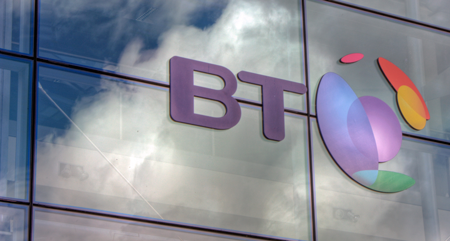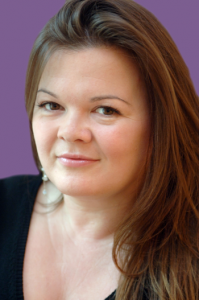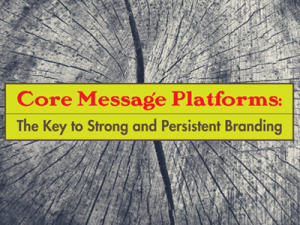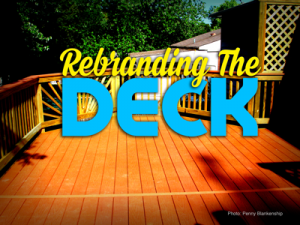
Even the accountants appreciate the brand!
Imagine starting out with the oldest brand in your category. Your job is to reinvigorate the brand − and double its value. That’s exactly the challenge that faced Suzi Williams, CMO of BT. BT is the world’s oldest telecom company, formerly known as British Telecom, founded in 1846.
Suzi has worked over the past decade to strategically transform BT’s brand as BT transformed its business. So how did she infuse a legacy brand with a new spirit of bold inventiveness?

On joining BT in 2006, Williams found that “BT had spent years hiding its light under a bushel. Back then we were very much a company and not a brand.
“All the elements of a brilliant brand were already dormant in BT. What impressed me most, then and now, is the integrity and commitment of BT people, and the quiet excellence found in so many corners of the organization. BT has always been a purposeful and inventive company – I just had to pull these elements together into a brand vision and framework to build on what was there.”
Strategic moves have recast customer perceptions of BT. In the past decade, BT rolled out a new fiber-optic broadband network, sponsored the London 2012 Olympic and Paralympic Games, entered TV by creating new sports channels, and announced plans to add mobile services by acquiring EE.
Building a brand is all about the actions you take, Williams emphasizes. “I expect smart customers to judge us on what we do more than what we say. Bold moves like fiber, the Olympics and BT Sport are the things that show real intent and purpose, and get people to re-evaluate the business.”
Suzi helped BT understand that a brand is much more than a logo – it’s the way you touch people. She led work to define what the BT brand stands for, flesh out its brand personality, and set a consistent tone of voice.
“We work to incorporate a bold and inventive spirit into the brand – without compromising the core equity of trust. With an established brand like BT, that’s always the challenge – creating new and positive momentum while keeping the good bits that work,” she says.
“We bring BT’s purpose to life for customers through the idea of ‘creating possibilities’ for people to connect, to work smarter and to get more out of life. That thinking guides everything we do and encourages us to be laser-focused on getting the right benefit to customers at the right price.”
BT keenly understands that customers want simplicity, not complexity. Customers are looking for services that are easy to use, a bill that’s easy to understand, and marketing offers that combine multiple services into one convenient package.
Strategic and brand initiatives have doubled the value of the BT brand to $16.2 billion since 2009 (according to Brand Finance). That dramatic growth in brand value makes BT the third most-valuable brand in the UK and the eighth most-valuable telecom brand in the world.
To build the BT brand, Williams tapped a deep well of branding and marketing experience from her work at Proctor & Gamble (P&G), the BBC, and French telecom Orange.
BT was among the early brands to take tone of voice seriously. Since 2007, BT has trained 1 out of 5 BT employees on how to apply its tone of voice guidelines. Call center employees, creative agencies and even the board learned how to deliver the BT tone of voice – and it’s really paid off.
“We’ve saved or made BT many millions of pounds through getting our tone right more often. Imagine – a simpler call center script reduces call times by 10%. In a company like BT that’s not just a happier customer, it’s a very substantial cost saving.
“Tone of voice is one of my favourite brand initiatives. That’s because it costs so little and delivers not only a simpler, better, warmer brand experience, but it also saves money, and empowers and engages at the same time. So even the accountants like it.”
Suzi persuaded the BT board to sponsor the London 2012 Olympic and Paralympic Games. She says, “We love creating show-stopping moments for the brand, and London 2012 was an unmissable opportunity for the whole company to pull together and show BT at its best. We came out of London 2012 as the most-recognized sponsor of the Games and the brand that had contributed most to the Games.
“To our customers we started to say, ‘If we can do this for the Olympics, we can do it for your business.’ And BT people were very proud,” she recalls.
The success of the London 2012 Games paved the way to move into the TV sports market. The company acquired broadcast rights from the football Premier League and created two new BT Sport channels.
“With BT Sport available in more than 5 million households, it makes us more compelling as a media and communications company. It’s a new reason for customers to engage with BT in a new way. It gives us a new face to the market, transforming the way we’re seen and how employees feel,” Williams says.
Now BT is preparing to help customers handle Big Data and connect the Internet of Things. The main constraint on Big Data’s growth so far has been the requirement that humans enter the data – but machine-to-machine (M2M) communications are removing that constraint, Williams observes.
BT is demonstrating what the Internet of Things can deliver through the Milton Keynes Smart City project, the aim of which is to reduce the city’s growth constraints and improve its citizens’ quality of life. So far the project has enabled:
- A 50% reduction in traffic congestion
- Savings of up to 20% in water
- A 2.8% reduction in electricity consumption
- A 2% reduction in gas use.
To prepare for future customer demands including Big Data, now BT is further extending its fiber networks to reach 90% of UK homes and businesses. BT plans to enter mobile services through its proposed acquisition of EE, positioning BT to run both the UK’s largest fibre network and its largest 4G network.
Over the years, Williams honed a fine sense of what it takes to succeed in marketing. “Marketing is part art and part science, so while strategy and data are essential, instinct, insight and zeitgeist are important too,” she observes.
“Don’t get lost at a keyboard. Marketing happens in the real world where real people live. Don’t be scared to go out and get to know your customers and stakeholders. Always hire people and agencies that push you and inspire you in equal measure.
“I like to balance the scale and resource of a big company with an entrepreneurial restlessness and creativity. What I call ‘strategic patience’ is vital too: brands are long-term sustainable assets, and it’s helpful to think with a longer view – especially through tough economic times.
“But in the final analysis excellence of execution is the bedrock of everything. So many great strategies fail in the execution.”
Her advice to aspiring marketers: “Be curious. Be fascinated by people and technology. Immerse yourself in media of all kinds. Get a job that stretches you, scares you, and makes you uncomfortable. Pay attention to psychology and neuroscience but not too much. And learn to code, but just a little. Then roll up your sleeves, listen more than you talk – and remember to enjoy it!”
Suzi Williams offers marketers 8 ideas for brand-building:
- While strategy and data are essential, instinct, insight and zeitgeist are important too.
- Hire people and agencies that push you and inspire you.
- Understand that the brand is much more than a logo – it’s a way to touch people.
- Be clear about what the brand stands for.
- Build a brand through the actions you take, not just the words you say.
- Create show-stopping moments for the brand.
- Manage tone of voice, both to make customers happy and save money.
- Measure brand value and actively manage it, top down and bottom up.



